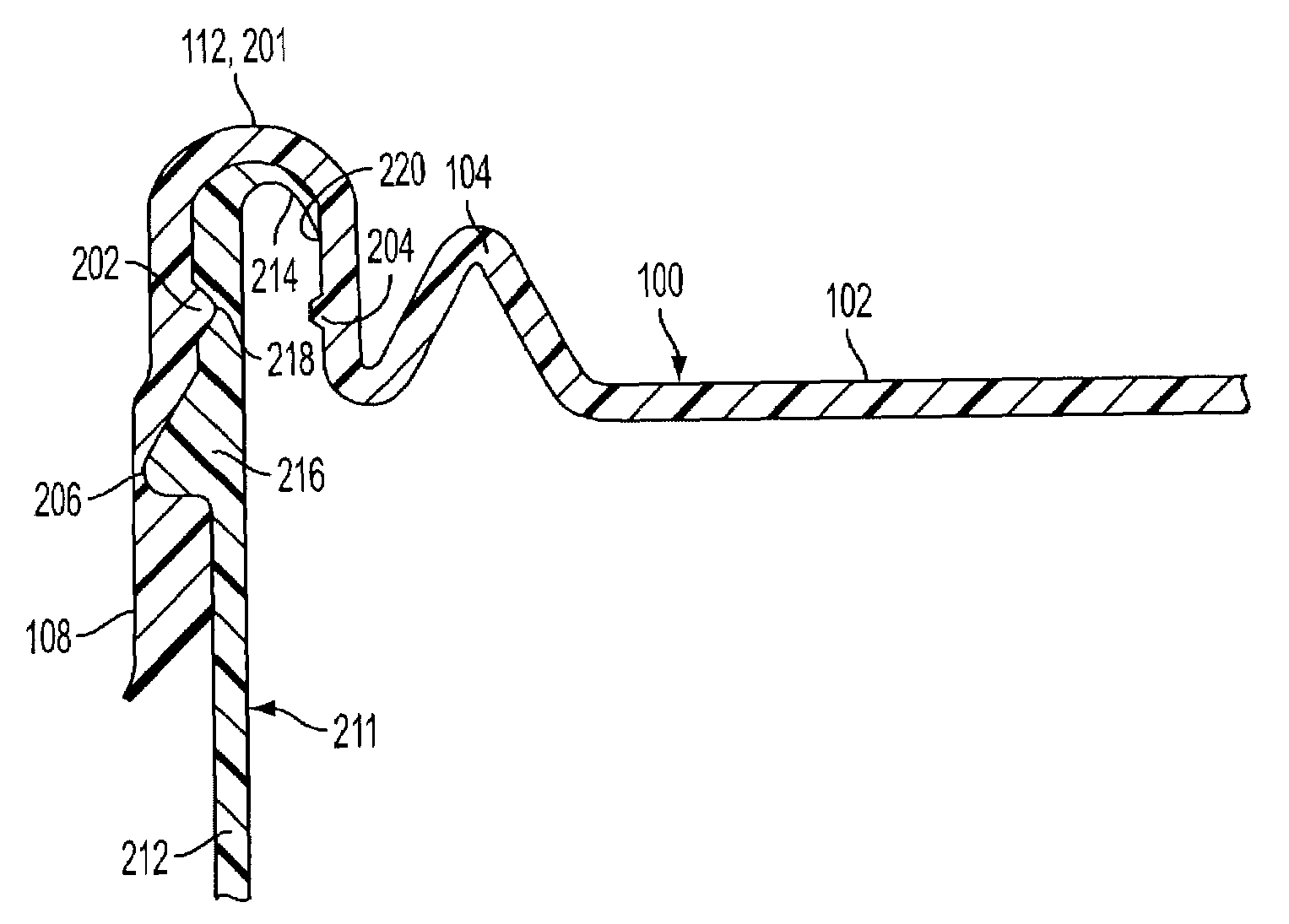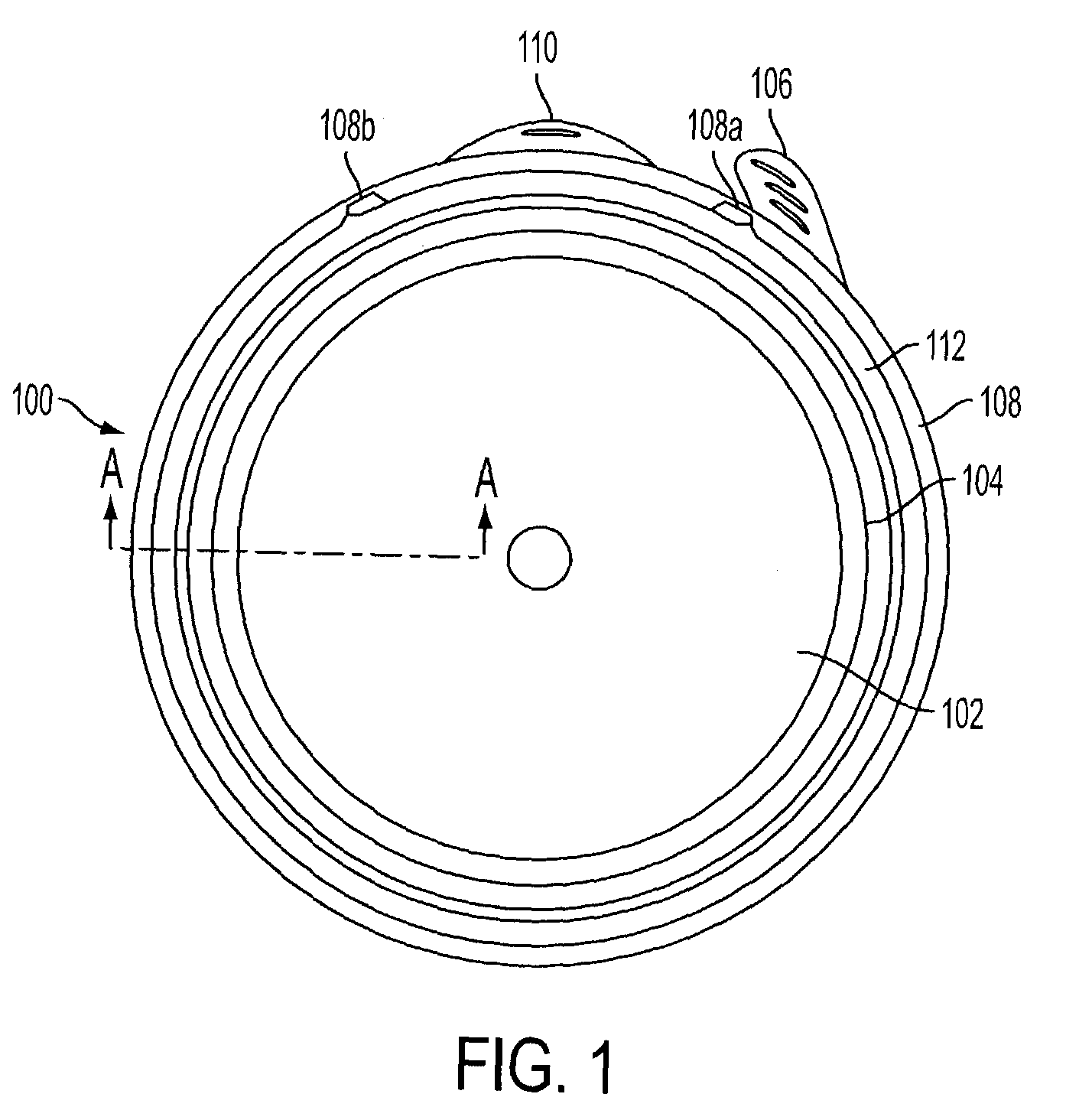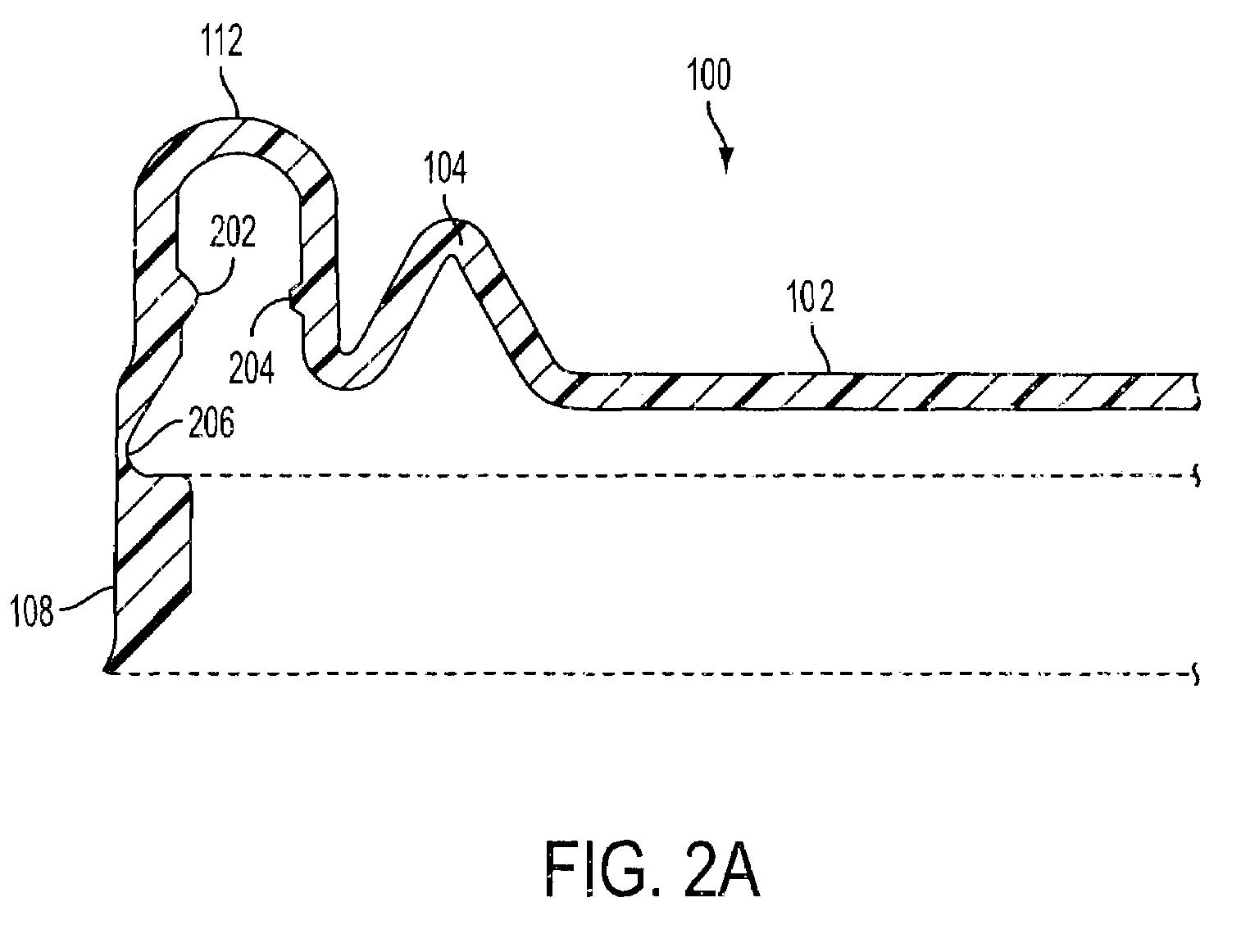Self-adjusting re-sealable spring center seal closure
a seal closure and self-adjusting technology, applied in the field of plastic containers and lids, can solve the problems of injection molded plastic containers not being recycled, not providing a container that is well suited, and difficulty in removing the lid from frozen containers, etc., and achieve the effect of convenient removal
- Summary
- Abstract
- Description
- Claims
- Application Information
AI Technical Summary
Benefits of technology
Problems solved by technology
Method used
Image
Examples
Embodiment Construction
[0030]As can be seen from FIGS. 1 and 2A, a lid 100 according to the present invention is substantially circular and has a substantially planar center region 102. A spring 104 surrounds the center region 102. The spring 104 in the illustrated embodiment is an annular formation that bends in one direction out of the plane defined by the center region 102 and then bends back. The lid 100 also has a pull-tab 106 to remove a tamper-evident seal 108 clockwise from a break point 108a to a breakpoint 108b. In the illustrated embodiment, the seal 108 is a band that extends annularly around the lid 100 and a container that the lid covers. A push-up tab 110 remains on the lid 100 after the tamper-evident seal 108 is removed, allowing the user to push the lid up and remove it from the container. The lid 100 also includes an arcuate flange receiving portion 112 near the perimeter of the lid 100 to receive the flange of a container.
[0031]As can be seen from FIG. 2A, the flange receiving portion ...
PUM
| Property | Measurement | Unit |
|---|---|---|
| length | aaaaa | aaaaa |
| sealing pressure | aaaaa | aaaaa |
| circumference | aaaaa | aaaaa |
Abstract
Description
Claims
Application Information
 Login to View More
Login to View More - R&D
- Intellectual Property
- Life Sciences
- Materials
- Tech Scout
- Unparalleled Data Quality
- Higher Quality Content
- 60% Fewer Hallucinations
Browse by: Latest US Patents, China's latest patents, Technical Efficacy Thesaurus, Application Domain, Technology Topic, Popular Technical Reports.
© 2025 PatSnap. All rights reserved.Legal|Privacy policy|Modern Slavery Act Transparency Statement|Sitemap|About US| Contact US: help@patsnap.com



